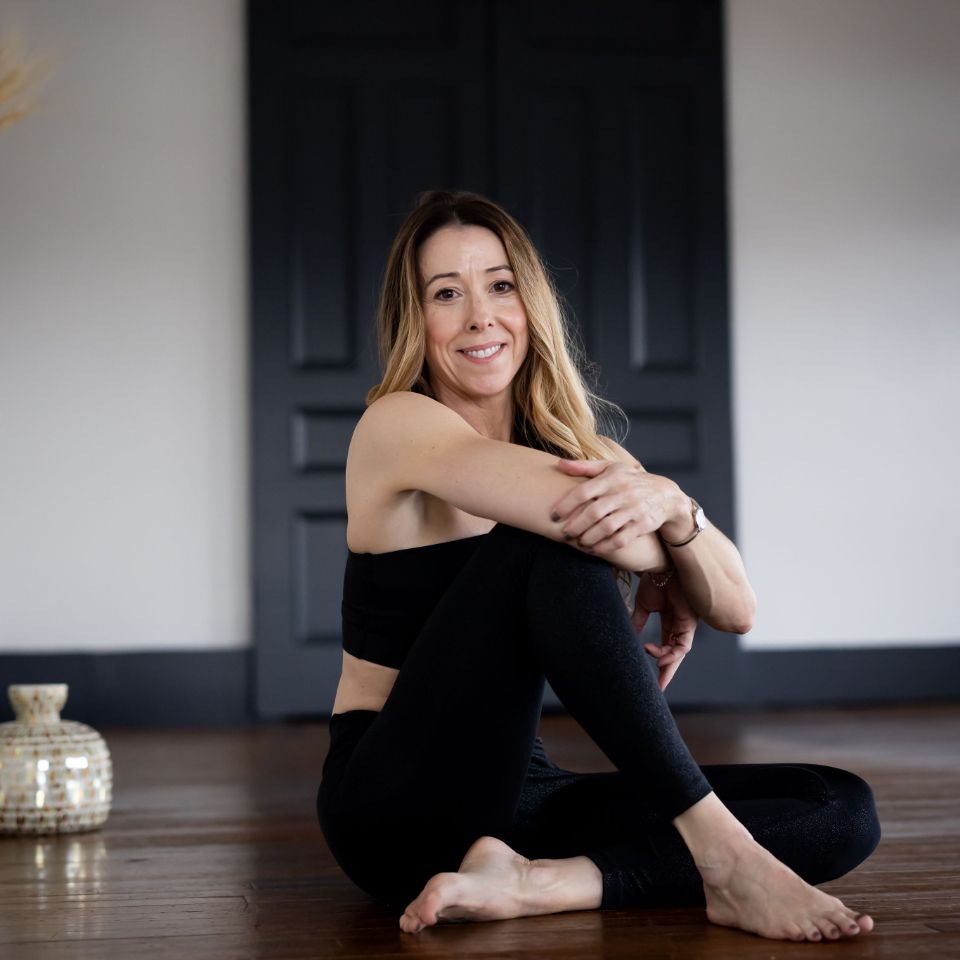Lower Back Pain and Sitting

Anyone that has been required to sit in a chair for an extended period of time (more than 45 minutes) is putting strain on the sacrum, sacroilliac (SI) joints, and lumbar. So many things start to happen when we sit for too long. So many things.
To start, let me just say... the human body is incredible and is capable of so many things...but sitting in a chair is just not one of them. Now, sitting cross-legged and squatting are a different story. However, most of the world uses chairs now. And honestly, cross-legged isn't all it's cracked up to be either. Go ask your Buddhist friends and Roshis. Back pain all over the place.
4 Things that Happen To Your Body From Sitting Too Much
1. Sitting upright, in the perfect posture puts continual pressure on the sitting bones that is passed along into the SI joints. This puts pressure and weakens the deep hip muscles.
2. The psoas begins to shorten. (Its the muscle that connects the femur bone to your lumbar.)
3. Shoulders start to round and the neck gets tight and stiff. Pectorals start to shorten.
4. Glutes weaken and hamstrings shorten...
And this is just the beginning of what is happening in the physical body, there's a lot more. [For a look at what's happening energetically check out my post on grounding]
Stress and Lower Back Pain
Now, add your average, normal work/life related stress to this position and your muscles enter into a state of mild contraction. When this happens, we reinforce the position that we are in (sitting) and it's like a little layer of something frozen inside the body. The fascia, which connects everything and runs through every muscle, does more than just hold us together. It's the glue that gets gluey-er (no it's not really a word.) Fascia is also an extension of your nervous system. So....if you're feeling stiff, it's the stress response literally making your glue get stiff and less able to move.
So...instead of turning to hardened glue...we move, stretch, and exercise to soften the fascia. Warmed up fascia will 'melt' and allow you to move deeper into the stretch. That's why, in most styles of yoga, we strengthen first, then stretch. A warm, partially fatigued muscle is much more pliable as the fascia has softened and 'melted' just a little bit.
I've got some great practices for you, desk jockey! Not a whole lot of time, and the rewards are: hips and a lower back that feels strong and healthy...and and upper back and neck with more range of motion.


